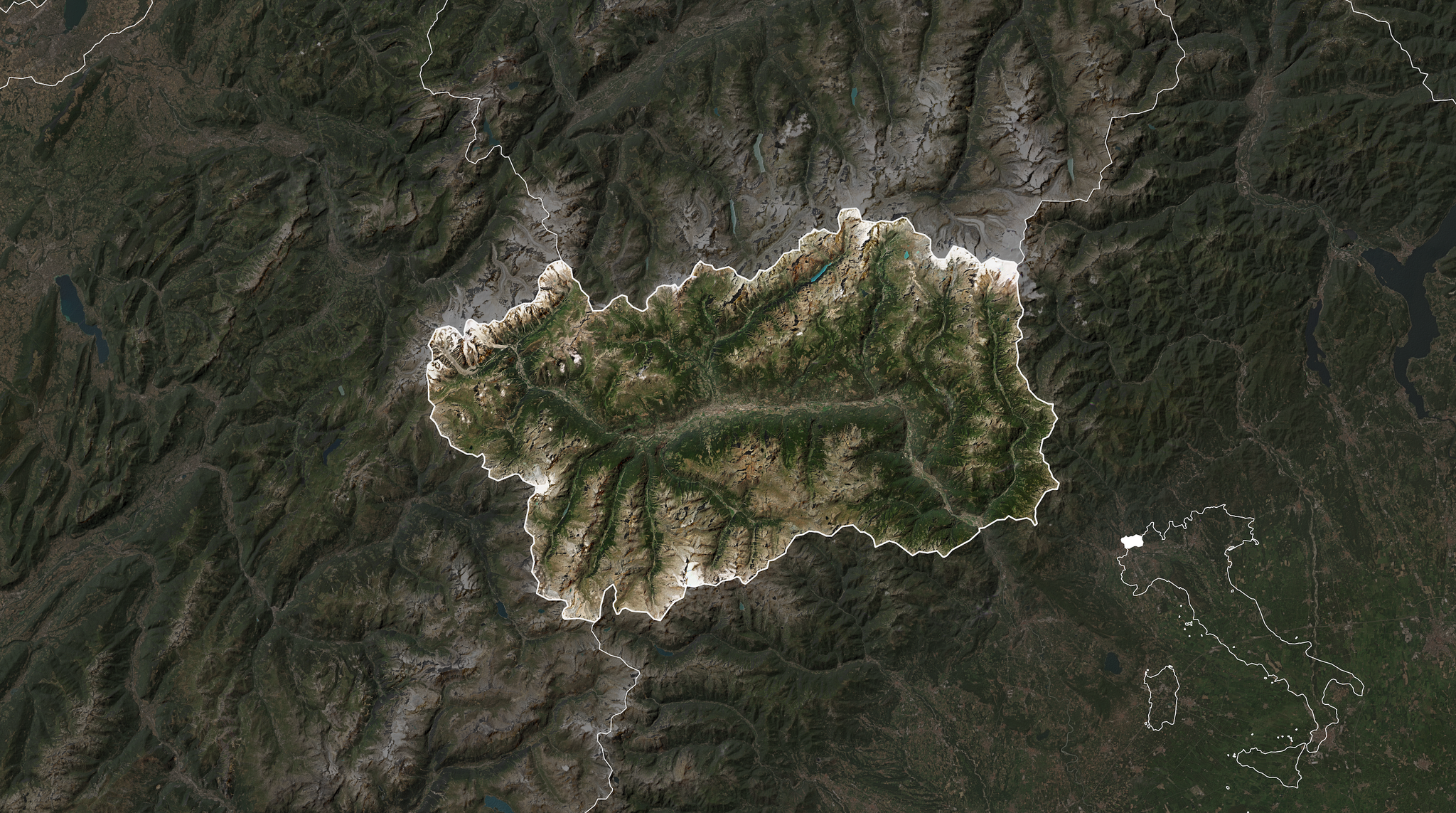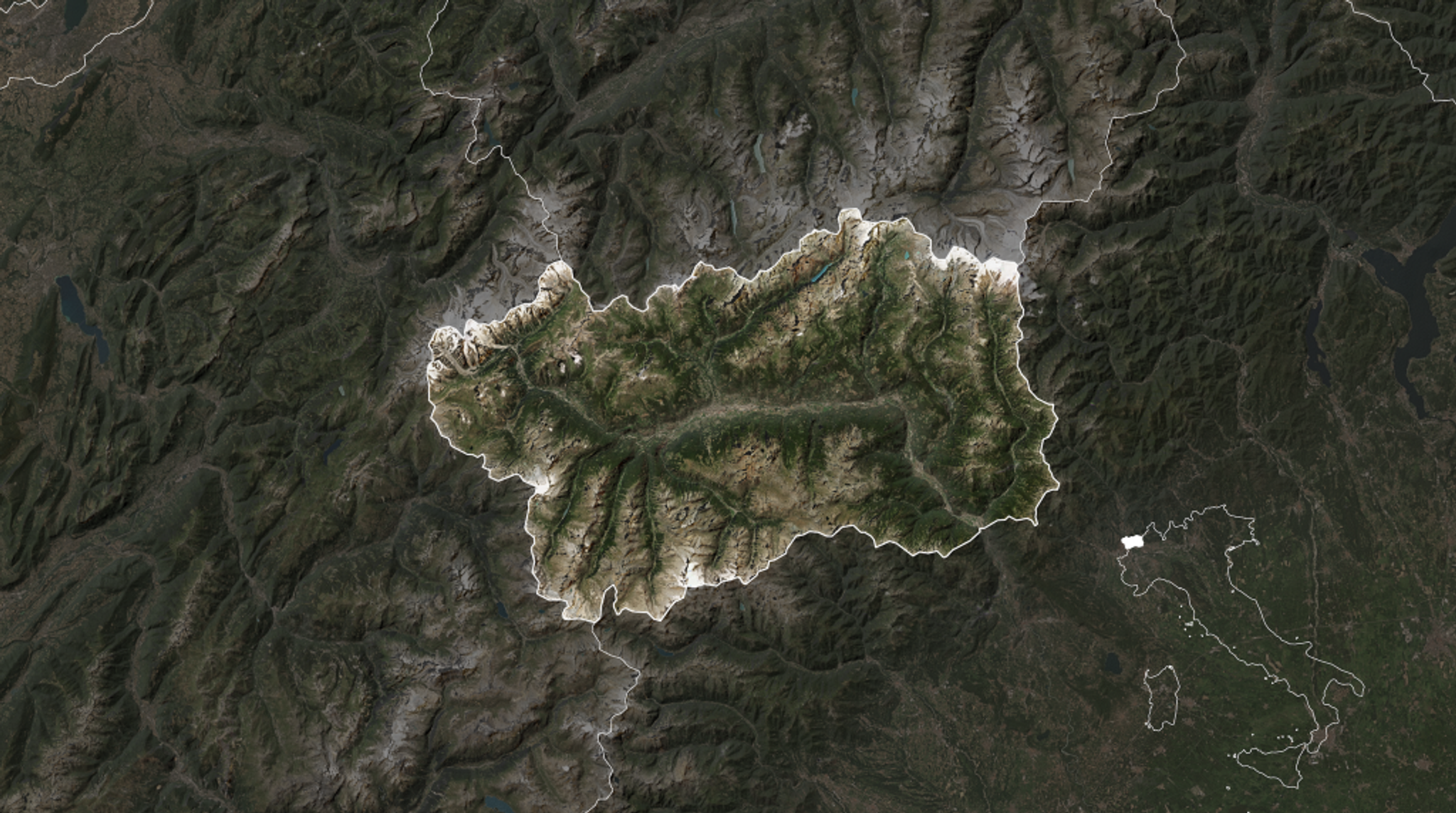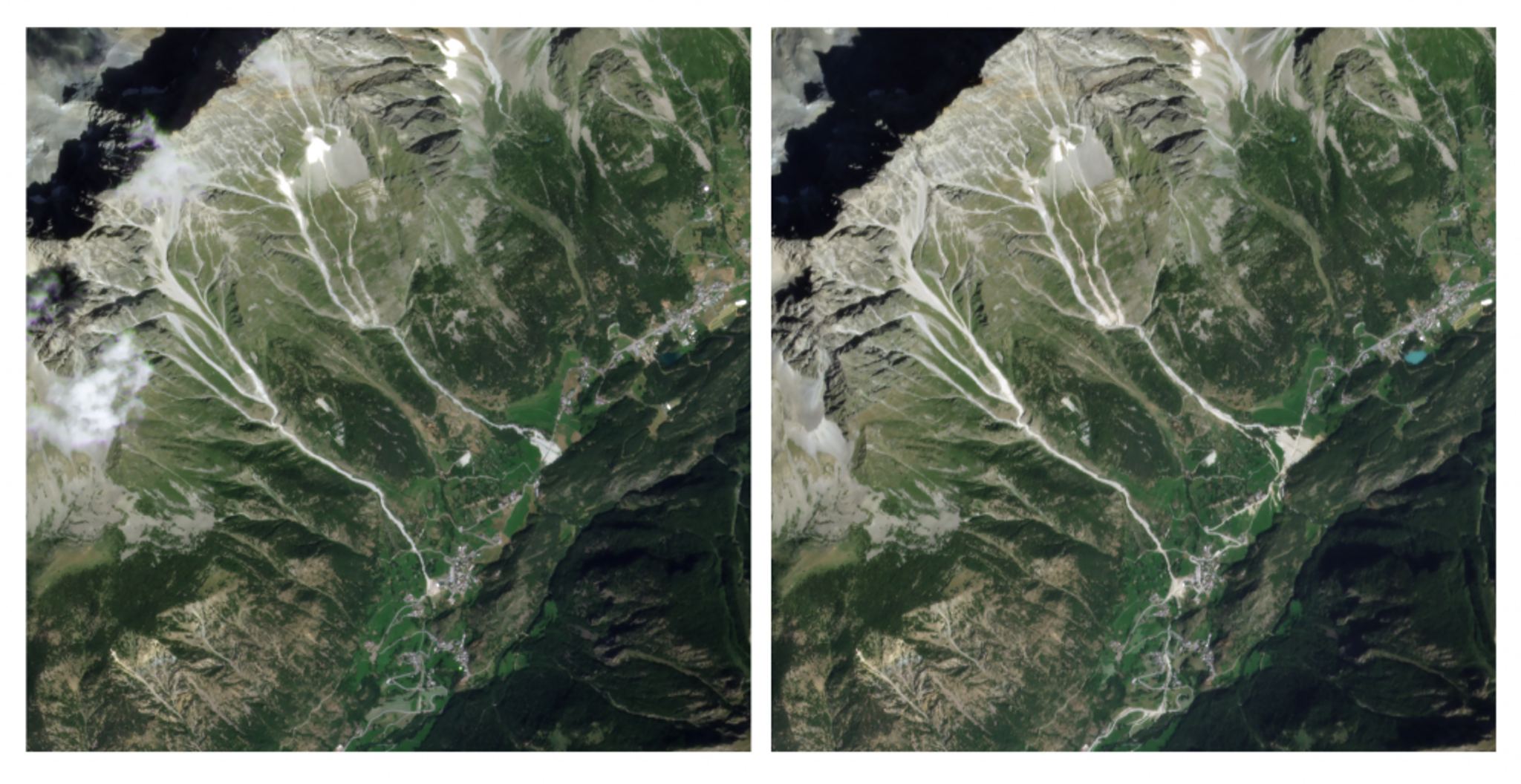Driving Innovative Approaches for Proactive Disaster Management: The Aosta Valley of Northern Italy

Locator map of Aosta Valley in northern Italy, made with Planet satellite image data.
StoriesGetting ahead of natural disasters is no easy feat, especially in a geographically challenging area like the Aosta Valley of Northern Italy. Home to the Italian slopes of Mont Blanc, this region separates the Pennine Alps from the Graian Alps and is particularly susceptible to landslides. These natural events have caused flooding, destruction, and loss of lives and resources. To mitigate these risks, the government of the Aosta Valley leverages Planet’s satellite data to build an early warning system aimed at effectively managing riverbeds and preventing floods.

Locator map of Aosta Valley in northern Italy, made with Planet satellite image data.
A Land Suitable for Remote Sensing
The Aosta Valley is characterized by its extreme geography, making it both a suitable and challenging area for remote sensing. Spanning 19,350 hectares of glaciers, it is home to all the "4,000" peaks of the western Alps, with over 40 mountain peaks exceeding 4,000 meters. The region also features numerous impervious and inaccessible areas and serves as an EGMS validation site for landslide issues.
"We are the smallest region in Italy, located in the northwestern corner, a very mountainous region with the highest peaks in the Alps, including Matterhorn and Mont Blanc. We are very prone to landslides and geohazards, which threaten human lives and obstruct access to important tourist resort towns like Courmayeur. Our job is not only to react but also to prevent these geohazards as much as possible,” shares Davide Bertolo, Chief Geologist of the Aosta Valley region.
The Regional Geological Survey is dedicated to tackling land stability issues through comprehensive field inspections and geophysical analyses. Their risk mitigation strategies are multifaceted, incorporating topographic surveys using total stations, GNSS, UAS, and scanning stations, along with 24/7 monitoring of large landslides exceeding 1 million cubic meters.
Leveraging Planet Data for Proactive Disaster Management
Planet’s PlanetScope and SkySat data has markedly enhanced the Geological Service’s analysis capabilities. The decision-making system, primarily based on Planet satellite images, provides swift and effective information crucial for managing riverbed maintenance and flood prevention.

Before and after comparison of a landslide which occurred in Oyace, a region of Aosta Valley, Italy. Left: PlanetScope image taken August 11, 2023 (before landslide). Right: PlanetScope image taken August 20, 2023 (after landslide).
With our PlanetScope data, this team has been able to run NDVI analyses, and when combined with cosmic ray data and field inspections, this has supplied essential information for aqueduct repair. Furthermore, RGB analysis of our PlanetScope data has enabled their identification of precursor elements, significantly enhancing the understanding of the triggering dynamics behind the Challand-Saint-Anselme landslide.
"We have been working with Planet since 2017 and were immediately aware of its potential due to its daily revisit frequency and multispectral bands. These features enable us to assess the evolution of landslides and detect early warning signs like water infiltration in the ground, which usually triggers landslides. With Planet’s capabilities, we can deploy our field teams to the right places promptly, saving time, human lives, and preventing damage to infrastructures,” says Bertolo.
Looking ahead, the Geological Service aims to explore the potential of Artificial Intelligence, deepen their understanding of landslide precursor events, and integrate multisource information. They also plan to extend their aqueduct analysis across the entire Aosta Valley region, enhancing their proactive disaster management capabilities.
Watch the accompanying video to hear more from Davide Bertolo on how this partnership is transforming disaster management in one of Italy’s most challenging regions.

Ready to Get Started
Connect with a member of our Sales team. We'll help you find the right products and pricing for your needs.

